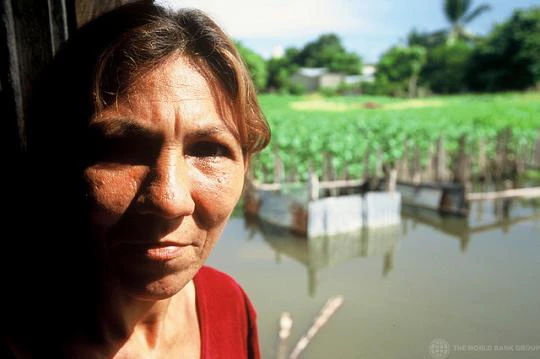Photo: When disasters strike – like floods, tsunamis, earthquakes or cyclones – they can cause, not just human suffering, but financial damage. Using well-crafted Disaster Risk Financing and Insurance (DRFI) instruments can help ease the impact of a potential financial catastrophe. Credit: World Bank Photo Collection.
When Tropical Storm Sendong battered the Philippines in late 2011, catastrophic flash floods claimed more than 1,200 lives and damaged over 50,000 houses. In addition to the human suffering, disasters like this often have a devastating effect on the budget of vulnerable countries, leading to the reallocation of scarce resources away from development programs to recovery and reconstruction. Governments also need immediate resources for rapid response to minimize post-disaster impacts.
But the Philippines had taken steps to prepare against such disasters. Just months before Sendong made landfall on the island of Mindanao, the government signed a US$500 million contingent credit line with the World Bank. This provided immediate access to liquidity to help finance emergency response and recovery operations.
Yet questions remain about financial protection strategies and instruments such as this contingent credit in the Philippines. For example: Does a government need to establish prior rules for post-disaster expenditure, or does it otherwise risk a slow and poorly targeted response with low impact on poverty and developmental outcomes? Was contingent credit the most appropriate instrument to finance this risk, or should other instruments, such as insurance, have been considered instead of or in addition to it? And fundamentally: Is disaster risk financing and insurance (DRFI) a cost-effective way of reducing (expected) poverty and improving (expected) developmental outcomes?
Chasing answers and robust evidence, the World Bank and the Global Facility for Disaster Reduction and Recovery (GFDRR) have teamed up with the UK Department for International Development (DFID) to better understand the impact and efficiency of financial protection strategies, which use any of a number of complex and innovative sovereign DRFI instruments that have seen a tremendous growth in recent years.
To overcome inevitable constraints in historical data associated with extreme events, the project will use probabilistic disaster risk models to evaluate selected sovereign DRFI programs based on a large number of simulated scenarios. Collaborating with a range of organizations – from the insurance, public finance, government, international development and research sectors – combining individual insights from the large number of voices at the table into a coherent operational framework will be just one of the challenges for the project.
The World Bank’s Non-Bank Financial Institutions Service Line, within the Financial and Private Sector Development Network, and GFDRR are partnering with an increasing number of countries to improve the financial resilience of governments, businesses and households against the economic burden of disasters.
This project aims to take that agenda to the next level: not only helping countries be financially prepared for disasters, as we saw in the Philippines, but through improved evidence and forward-looking appraisal to ensure that this is done in the most cost-effective way.
This project is part of a much larger effort by the World Bank to use improved risk management as a powerful tool for development.



Join the Conversation